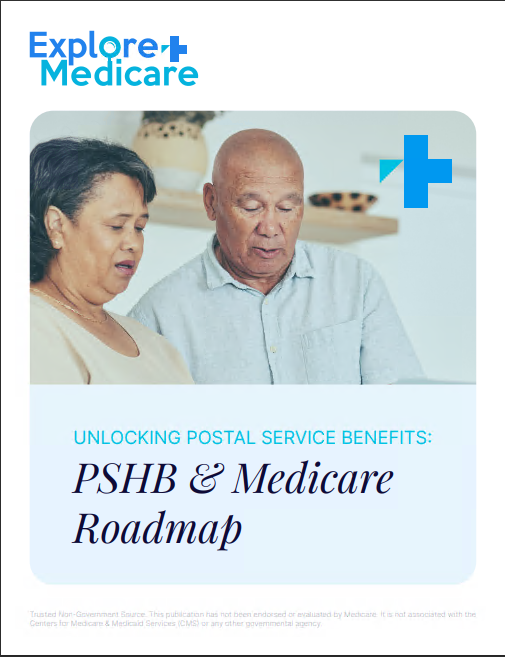Key Takeaways
-
You are not automatically enrolled in Medicare unless you meet specific conditions, such as receiving Social Security benefits before turning 65.
-
Delaying your enrollment could lead to coverage gaps and permanent late enrollment penalties.
Understanding Who Gets Enrolled Automatically
Medicare enrollment doesn’t work the same way for everyone. In 2025, automatic enrollment applies only if you’re already receiving Social Security or Railroad Retirement Board (RRB) benefits at least four months before your 65th birthday. In that case, you’re typically enrolled in both Part A and Part B automatically.
If you’re not yet receiving these benefits, you must take the initiative to sign up. This includes people who are still working, those who have deferred Social Security, and individuals who aren’t eligible for automatic benefits.
The Key Enrollment Periods You Need to Know
Medicare offers several enrollment windows to sign up. Missing them could lead to unnecessary delays and penalties.
Initial Enrollment Period (IEP)
This seven-month window starts three months before your 65th birthday, includes your birthday month, and ends three months after. For example, if you turn 65 in June, your IEP runs from March 1 to September 30.
-
If you enroll in the three months before your birthday, coverage begins the first day of your birthday month.
-
Enroll during your birthday month or the three months after, and coverage starts one to three months later.
General Enrollment Period (GEP)
If you miss your IEP, you can enroll during the GEP, which runs from January 1 to March 31 every year. However, your coverage won’t begin until July 1. More importantly, you may face lifetime late enrollment penalties, especially for Part B.
Special Enrollment Period (SEP)
If you’re still working past 65 and have employer-sponsored health coverage, you can delay Medicare Part B without penalty. Once that coverage ends, you have eight months to enroll during a Special Enrollment Period.
What Happens If You Don’t Enroll on Time
Failing to act during the correct window can have serious financial and healthcare consequences. Here’s what you might face:
-
Coverage gaps: You could be without insurance for several months.
-
Late enrollment penalties: For every 12-month period you delay Part B without other credible coverage, your monthly premium could increase by 10% permanently.
-
Limited enrollment windows: If you miss both IEP and SEP, you’re stuck waiting for the next GEP.
These consequences apply to Part B and Part D (prescription drug coverage). Part A is usually premium-free for most people, so penalties are less common, but not impossible if you don’t qualify.
When You Should Consider Signing Up Early
It may be in your best interest to enroll in Medicare as soon as you’re eligible, even if you’re not retired. Signing up during your IEP ensures timely coverage and avoids penalties. You should especially consider early enrollment if:
-
You’re no longer covered by an employer plan
-
You’re self-employed or uninsured
-
You’re not eligible for a Special Enrollment Period
Keep in mind that even if you have retiree health benefits, they might not count as credible coverage for Medicare Part B or Part D.
The Role of Employer Coverage and COBRA
Many people delay Medicare because they’re still working and have group coverage. In 2025, Medicare allows you to do that without penalty if your employer has 20 or more employees. However, once you stop working, the rules change quickly.
COBRA coverage does not count as creditable coverage for delaying Part B. If you stay on COBRA without enrolling in Medicare, you could be hit with penalties and lose coverage once COBRA ends. You must enroll in Medicare during the SEP triggered by leaving your job, not when COBRA ends.
Medicare and Marketplace Coverage
If you bought a health plan through the Health Insurance Marketplace and are turning 65, Medicare eligibility changes your situation. You are expected to transition to Medicare once you’re eligible, and staying on a Marketplace plan past that point could leave you without creditable coverage.
-
You should cancel your Marketplace plan the day before your Medicare starts.
-
Premium tax credits will no longer apply once you’re eligible for Medicare.
Not enrolling in Medicare on time while holding a Marketplace plan can still result in penalties.
Penalties Aren’t One-Time Charges
One major misconception is that penalties are temporary. In reality, most Medicare penalties are lifetime surcharges on your monthly premiums:
-
Part B: A 10% penalty for every full 12-month delay without creditable coverage
-
Part D: A 1% penalty per month you delay, multiplied by the national base beneficiary premium
These penalties add up quickly and become a permanent part of your Medicare costs.
What to Do If You Missed Your Window
If you missed your Initial or Special Enrollment Period and don’t have creditable coverage, your next opportunity is the General Enrollment Period from January 1 to March 31. Your coverage will begin on July 1.
In the meantime, you may have to seek temporary private insurance or go without coverage, which increases your financial and health risks.
You should also prepare for higher premiums due to penalties. There is no automatic forgiveness unless you qualify for specific programs that provide financial assistance or meet certain exceptional circumstances.
Medicare Enrollment and Disability
People under 65 who qualify for Medicare due to disability are typically enrolled automatically after receiving 24 months of Social Security Disability Insurance (SSDI) benefits. In these cases:
-
You are automatically enrolled in Parts A and B
-
You can delay Part B if you have other creditable coverage
-
You’ll get a new IEP when you turn 65
But if you have ALS or end-stage renal disease (ESRD), different timelines and rules apply. For ALS, enrollment begins the same month disability benefits start. For ESRD, enrollment depends on the timing of dialysis or transplant.
Reviewing Your Options Each Year
Enrollment isn’t just about signing up once. Each year during the Annual Enrollment Period from October 15 to December 7, you have the opportunity to:
-
Add, drop, or switch Medicare Advantage plans
-
Switch between Original Medicare and Advantage plans
-
Join, drop, or switch Part D plans
This window is crucial if your health needs, provider networks, or medication lists have changed. It also lets you correct mistakes made during earlier enrollment.
How to Enroll
In 2025, there are several ways you can enroll in Medicare:
-
Online through the Social Security website
-
By phone at 1-800-772-1213
-
In person at a local Social Security office
You’ll need to have important documents ready, such as your birth certificate, Social Security number, and current health insurance information.
Timing Is Everything—Don’t Wait to Act
Enrolling in Medicare at the right time is your responsibility if you’re not enrolled automatically. The consequences for waiting are not just inconvenient; they can be costly and long-lasting. You need to understand the enrollment periods and evaluate your current health coverage to determine when and how to act.
If you’re unsure, talk with a licensed agent listed on this website to get professional guidance based on your situation.









